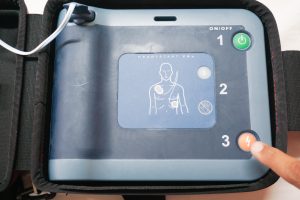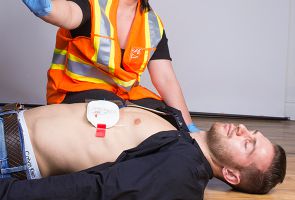A Lifesaving Guide
An Automated External Defibrillator (AED) is a crucial device designed to shock people experiencing sudden cardiac arrest (SCA). When the heart suddenly stops beating, quick action can mean the difference between life and death. Knowing how and when to use an AED is vital for anyone, as it can greatly increase the chance of survival.
When to Use an AED
An AED should be used as soon as possible on someone suspected of experiencing a cardiac arrest. Cardiac arrest is often recognizable by the sudden collapse of the individual, unresponsiveness, and lack of breathing or only gasping breaths. Time is critical in these situations: for every minute that passes without treatment, the victim’s chances of survival drop by about 10%.
Before using an AED, always check the person’s responsiveness. Tap their shoulder, shout to see if they react, and check for normal breathing (5 to 10 seconds). If the person is unresponsive and not breathing, call 9-1-1 immediately and begin chest compressions (CPR). Once an AED is available, it should be deployed without delay, alongside CPR.

How to Use an AED
AEDs are designed for simplicity, so even untrained individuals can use them effectively by following the prompts. Here’s a step-by-step guide:
- Turn on the AED – Most devices will either have an on/off button or will turn on automatically when opened.
- Attach the Pads – Remove the victim’s clothing to expose the chest. The AED will provide instructions for where to place the pads: one on the upper right side of the chest, and the other on the lower left side.
- Let the AED Analyze the Heart – Once the pads are in place, the AED will analyze the heart’s rhythm. Make sure no one is touching the victim during this time.
- Deliver the Shock if Needed – If the AED determines that a shock is necessary, it will instruct you to press the shock button. Ensure everyone is clear of the person before doing so.
- Continue CPR – After the shock is delivered (or if no shock is needed), continue CPR until emergency responders arrive or the person shows signs of life.
Conclusion
Knowing how and when to use an AED is critical in an emergency. These devices are designed to be simple, but they can save lives when used quickly and correctly. Early use of an AED, combined with CPR, can double or even triple a person’s chances of survival in the event of sudden cardiac arrest.
Our WSIB approved Standard First Aid Training addresses CPR/AED along with First Aid Treatment. Would you know what to do?
I discuss the resuscitation rates between CPR only (about 15%) compared to CPR with an AED (about 75%) in a prior blog: Why do CPR?

